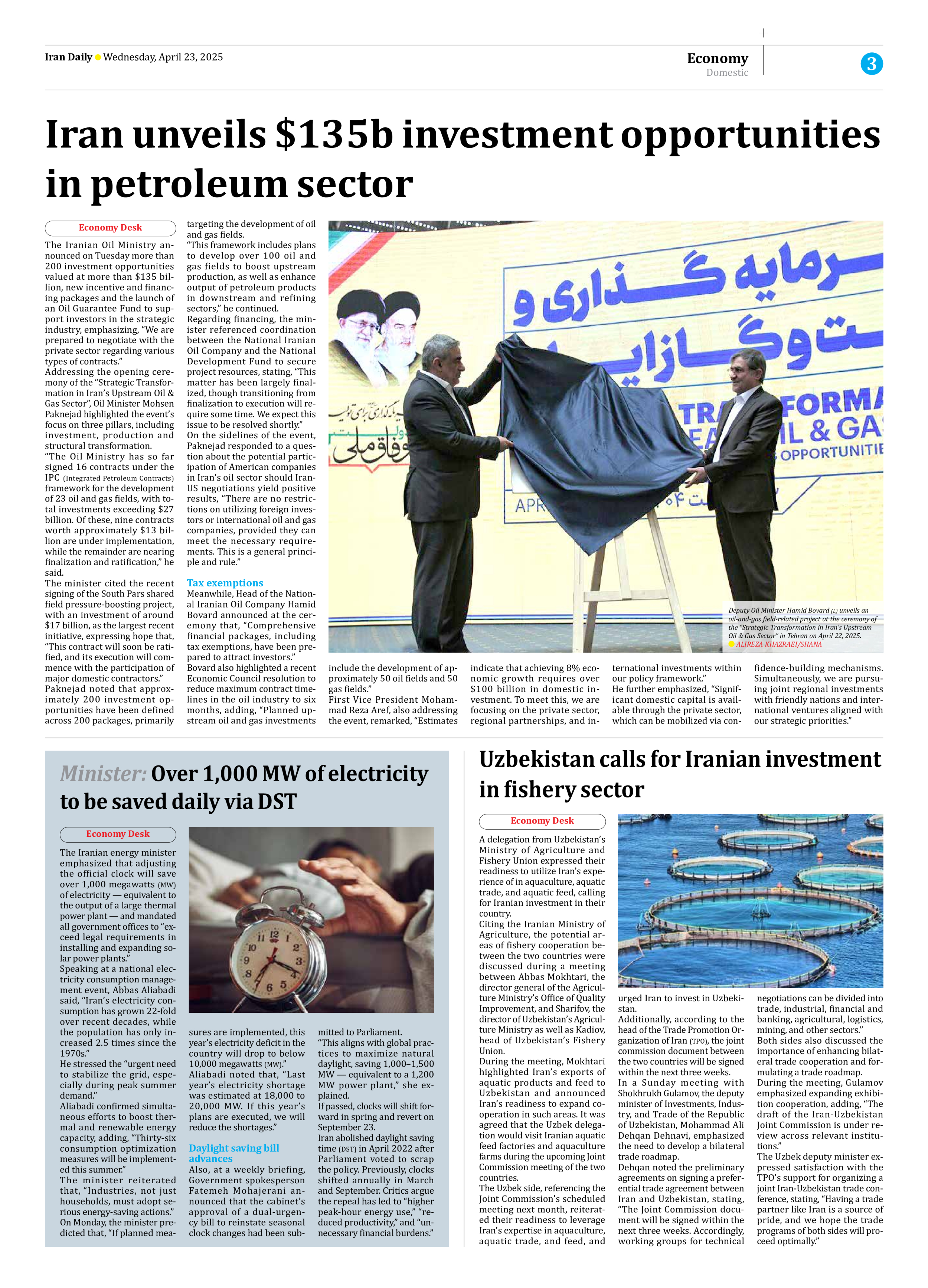
Minister: Over 1,000 MW of electricity to be saved daily via DST
The Iranian energy minister emphasized that adjusting the official clock will save over 1,000 megawatts (MW) of electricity — equivalent to the output of a large thermal power plant — and mandated all government offices to “exceed legal requirements in installing and expanding solar power plants.”
Speaking at a national electricity consumption management event, Abbas Aliabadi said, “Iran’s electricity consumption has grown 22-fold over recent decades, while the population has only increased 2.5 times since the 1970s.”
He stressed the “urgent need to stabilize the grid, especially during peak summer demand.”
Aliabadi confirmed simultaneous efforts to boost thermal and renewable energy capacity, adding, “Thirty-six consumption optimization measures will be implemented this summer.”
The minister reiterated that, “Industries, not just households, must adopt serious energy-saving actions.”
On Monday, the minister predicted that, “If planned measures are implemented, this year’s electricity deficit in the country will drop to below 10,000 megawatts (MW).”
Aliabadi noted that, “Last year’s electricity shortage was estimated at 18,000 to 20,000 MW. If this year’s plans are executed, we will reduce the shortages.”
Daylight saving bill advances
Also, at a weekly briefing, Government spokesperson Fatemeh Mohajerani announced that the cabinet’s approval of a dual-urgency bill to reinstate seasonal clock changes had been submitted to Parliament.
“This aligns with global practices to maximize natural daylight, saving 1,000–1,500 MW — equivalent to a 1,200 MW power plant,” she explained.
If passed, clocks will shift forward in spring and revert on September 23.
Iran abolished daylight saving time (DST) in April 2022 after Parliament voted to scrap the policy. Previously, clocks shifted annually in March and September. Critics argue the repeal has led to “higher peak-hour energy use,” “reduced productivity,” and “unnecessary financial burdens.”







